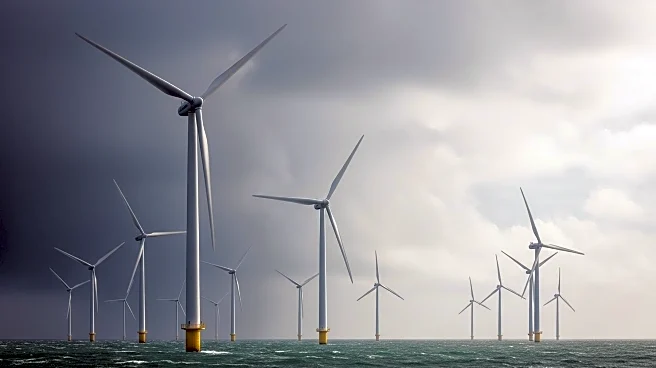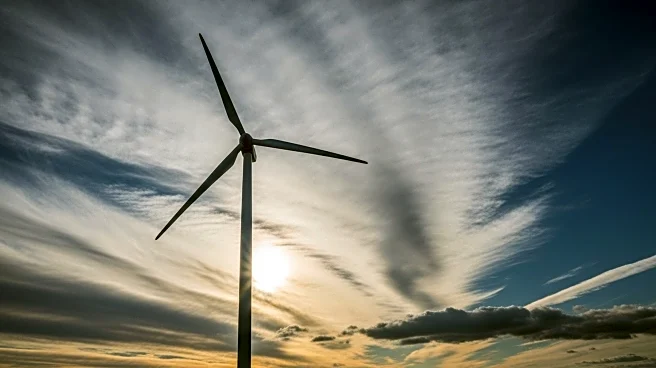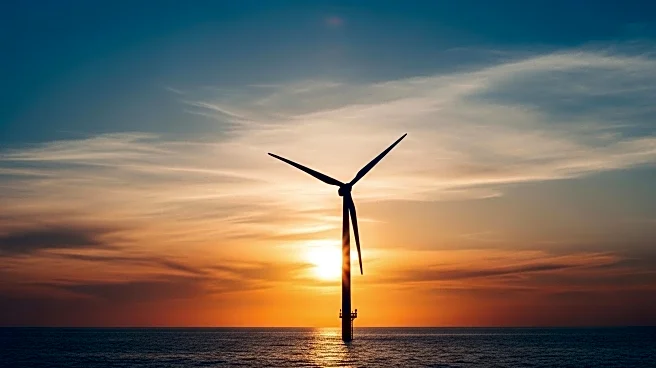What's Happening?
The U.S. offshore wind energy sector is facing significant regulatory uncertainty following policy changes under the Trump administration. Executive orders have halted new project approvals, rescinded designated wind zones, and suspended federal leasing, creating a challenging environment for developers. These actions, part of a broader 'America First Energy Dominance' strategy, have led to legal battles and financial losses for key players in the renewable energy sector. The Department of the Interior, prioritizing fossil fuels and nuclear energy, has framed offshore wind as a threat to national security and energy reliability. This policy shift has resulted in a fragmented energy landscape, with federal hostility towards offshore wind contrasting with state-level policies that continue to drive renewable growth.
Why It's Important?
The regulatory upheaval has destabilized the renewable energy sector, impacting investment and employment. The suspension of offshore wind projects has led to significant financial losses for companies like Ørsted and Equinor, affecting stock prices and investor confidence. The shift towards traditional energy sectors, supported by streamlined permits, poses challenges for the U.S. energy transition. Despite federal resistance, state-level initiatives and market forces continue to support renewable growth, highlighting the complex interplay between federal and state policies. The situation underscores the need for a balanced approach to energy policy that considers both national security and environmental sustainability.
What's Next?
Investors are likely to hedge against U.S. policy risks by diversifying into more stable regulatory environments abroad. Companies may pivot to international markets, seeking opportunities in Europe and Asia-Pacific. The long-term fundamentals of the energy transition remain intact, driven by technological innovation and global decarbonization efforts. Analysts project that projects with advanced deployment pipelines will outperform despite regulatory challenges. The sector's resilience will depend on balancing near-term stability in traditional energy sectors with long-term investments in renewables. As the U.S. navigates this regulatory landscape, the broader energy transition continues to progress globally.












